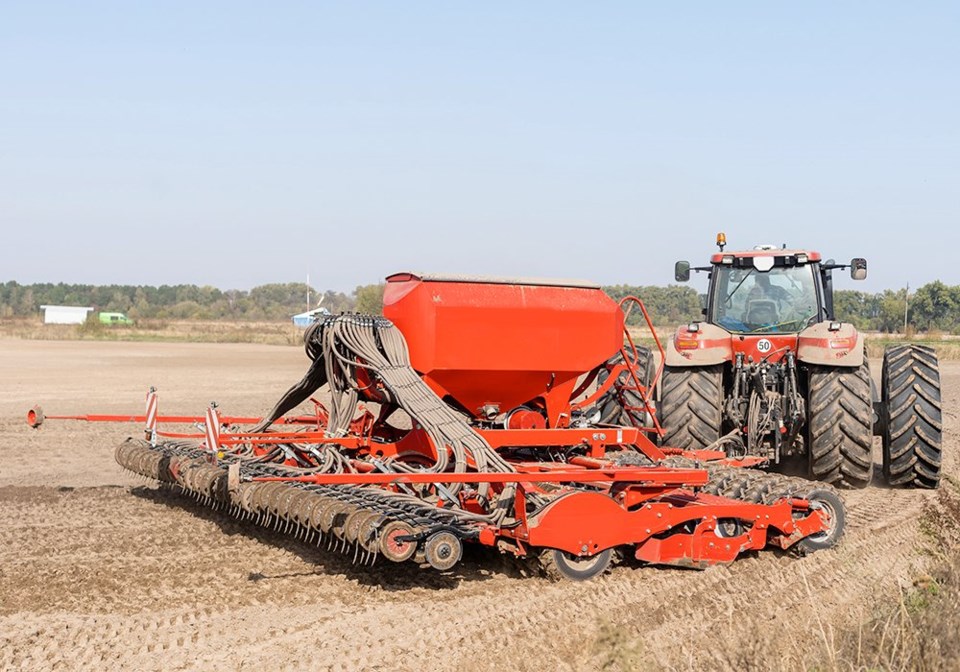WESTERN PRODUCER — Ukrainian farmers are optimistic that they will begin spring planting on schedule, says the head of a respected agricultural consulting firm based in Kyiv.
But plantings of some crops, most notably corn, could be considerably reduced because of the Russian invasion in the country’s eastern regions, where most of Ukraine’s annual 13 million to 13.5 million acre corn crop is produced, said Sergey Feofilov, founder and chief executive officer of the UkrAgroConsult.
Seed and fertilizer stocks for Ukraine’s spring planting operations are rumoured to be sufficient, Feofilov added. But spring fuel supplies are less certain.
In a March 11 interview, Feofilov said farmers may have enough fuel on hand to keep planting machinery moving for two to three weeks.
But additional in-season deliveries of diesel and gasoline will be needed if the country’s farmers hope to plant a typical crop.
Many Ukrainian farmers depend on imported fuel supplies from Russia and Belarus.
“I hope, if the military actions will be over soon, the decline in the planted area will not be so (significant). But if all these military events continue, well really it will be a rather considerable correction,” said Feofilov, whose agency specializes in analyzing Ukrainian and Black Sea agricultural markets.
“If we take corn, roughly slightly less than one half of corn area is situated in the regions of Ukraine where military actions are continuing now, so it might be a very influential factor.”
Despite ongoing uncertainty relating to fuel supplies and availability of agricultural chemicals, Ukrainian farmers are keen on planting spring crops, even in high-risk regions, Feofilov said.
“They quite realize that if they do not plant, they will not (harvest) anything in the summer and autumn, so I am sure that the farmers will do their utmost… to plant as much area as possible,” he said.
“The key problem is fuel. The available stocks of fuel are quite enough to start the planting campaign, maybe for two or three weeks of planting, but later on, only additional deliveries… might promote the expansion of planted areas.”
Ukrainian farmers typically plant about 60 million acres each year.
In 2020, the country’s farmers planted 63 million acres of crops and harvested more than 84.2 million tonnes of grain and oilseeds, according to the Ukrainian Grain Association.
The 2020 harvest included an estimated 30 million tonnes of corn, 25.3 million tonnes of wheat, eight million tonnes of barley and nearly 13 million tonnes of sunflowers, of which 12.7 million tonnes were crushed domestically.
As much as 98 percent of Ukraine’s annual wheat production is winter wheat, according to Feofilov.
Ukraine’s winter wheat crops were planted several months ago and are reported to be in generally good condition.
Feofilov said it is too early to say how the country’s spring-planting efforts will be affected by military activity, fuel supplies, availability of inputs, weather conditions and other factors.
The country’s agriculture industry also depends on foreign labourers, some who are unlikely to return for spring employment on Ukrainian farms.
Feofilov said there are significant areas of Ukraine that are not affected by military activity.
In areas of western Ukraine, where military risks are relatively low, spring plantings could potentially be increased.
“Plantings might be expanded in areas of Ukraine with no military risks,” Feofilov said.
“This might offset, to some degree, the (planting) losses in the eastern part of Ukraine” where military activity is continuing.
On March 11, Ukraine’s agricultural producers union said Ukrainian farmers are likely to reduce the area sown to sunflowers, canola and corn and replace those acres with more buckwheat, oats, millet and peas.
Feofilov said logistical challenges are also impacting Ukraine’s ability to access farm inputs and to market existing and future grain inventories.
Exports at all of Ukraine’s Black Sea ports have been suspended since late February. All incoming and outgoing ships have been blocked from entering or leaving.
In 2020, Ukraine’s total grain and oilseed exports were slightly less than 50 million tonnes, with much of that shipped through Black Sea ports at Mykolaiv, Odesa and Chornomorsk.
In a typical year, an estimated 65 to 70 percent of the country’s grain and oilseed exports are moved by rail to export terminals on the Black Sea or the Sea of Azov.
Another 20 to 25 percent is moved to export position by truck and the remaining 10 percent is moved by river barges.
Grain traders are now focused on finding alternative export routes for existing Ukrainian grain inventories and for wheat from the upcoming winter wheat harvest.
“A key (concern) among Ukrainian exporters and Ukrainian traders is how to arrange the best logistics for grain exports across western Ukrainian borders,” said Feofilov.
“Ukrainian traders really now are trying to arrange the logistics — the most effective, cost-saving logistics — for delivery of grain to European consumers by railways and even toward Baltic Sea ports,” he added.
Feofilov said the Ukrainian grain industry remains committed to supplying buyers around the world, but he acknowledged that Ukrainian production and supply efforts will face challenges if military activity continues.
“It is really… a factor of very high uncertainty,” he said.




